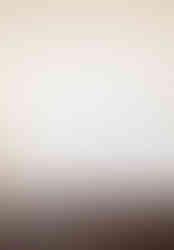La Realtà degli Altri [Other People's Reality]
installation, 2019




















This work was developed in response to the archive of the house-museum Casa Testori, dedicated to the art historian, collector, writer, dramaturg and painter Giovanni Testori.
"When I first visited Casa Testori I noticed a series of books about African art. I was told that Giovanni Testori’s interest in this topic emerged towards the end of his life. There seemed to be very little information on what might have moved Testori to be fascinated by this, except for three articles published on Il Corriere della Sera. Within three exhibition reviews that he penned in 1989-90, Testori offers some insights into his thoughts, and they are, I believe, quite refreshing. While major Italian museums and galleries were swept by a newfound fascination with African artefacts at the time, Testori questioned the assumptions and epistemological violence inflicted by the Western museum’s display and knowledge system onto these oeuvres belonging to a different (Other) culture. I was aware that this late interest pales in comparison with the magnitude of Testori’s life’s work and so in the installation I have tried to put these lesser-known writing in relation to one of Testori’s most characterising and enduring activities, that of art historian. I was captured by two boxes full of black and white photographs of paintings (mostly dating between the 16th and 18th century I believe), that had not been catalogued yet. They were used by Testori for the purpose of authenticating them. Upon finding, amongst them, a picture of Testori’s teacher, Roberto Longhi, with a magnifying glass in his hand, reminiscent of a modern-day detective, my mind went immediately to Carlo Ginzburg’s seminal essay Morelli, Freud and Sherlock Holmes: Clues and Scientific Method. By linking the work of these three figures (respectively a connoisseur art historian, the father of psychoanalysis and the quintessential detective, albeit fictional) Ginzburg sketched a genealogy of what he calls the “conjectural paradigm” – namely, an “evidential approach” which “builds knowledge of the whole from its parts” through the art of observation and deduction, rooted in symptomatology (medical semiotics). As I looked through the boxes full of black and white images, with Testori’s words on African art still resonating in my mind, I started to look out for clues as to how (and whether) non-Western subject were featured and represented. I could only find four images featuring non-white subjects. Inspired by Morelli’s illustrations of ears, hands and other body parts lifted from paintings in order to determine a signature execution style capable of assigning authorship, I have isolated these subjects to reveal their placement within the compositions and how they were portrayed. These materials were, finally, put in relation with a third element: a letter addressed to Testori requesting the authentication of a painting, whose owner claimed might have belonged to the Lombard painter Daniele Crespi. There is a striking story surrounding this very image, that claims that Crespi killed a man and used his corpse as a prop, in order to be able to portray the most realistic account of the body of Christ after crucifixion. I thought this story could enable a reflection on the way the Western aesthetic paradigm of realism – and its hegemonic status worldwide, especially over cultures deemed as ‘primitive’ – brings with it an aura of violence, whether physical (in such extreme, anecdotic cases) or epistemological."
Text from the exhibition catalogue "Se la realtà non è solo un fotogramma", a two-person show with Jacopo Rinaldi at Casa Testori, Milan, 2019.
Curated by Alessandro Castiglioni.